Xavier University of Louisiana: The Full Story
Being America’s only Historically Black and Catholic University is just the first of the distinctions that have set Xavier University of Louisiana apart for more than eight decades.
Despite its relatively small size (3,300 students), Xavier is a nationally recognized leader in the STEM and health sciences fields, producing more African American students who graduate from medical school each year than any other university in the United States. Its College of Pharmacy is also among the top producers of African American pharmacists.
Xavier’s liberal arts-based programs in areas such as art, business, education, psychology, and political science – as well as recent additions of bioinformatics, data science, neuroscience, crime and social justice and jazz studies – offer students an unbeatable combination of traditional classroom study, hands-on research, service-learning opportunities, and life experiences.
The winning Xavier formula? Provide students with a well-balanced curriculum and an environment that nurtures their intellect and feeds their souls. Its moderate enrollment breeds a “quality not quantity” approach that lends itself to a low faculty/student ratio (13 to 1) and encourages close faculty-student interaction and enhances opportunities to work with a mentor in collaborative classroom projects, high-level undergraduate research, and service-learning activities.
Moreover, if there is one defining trademark that seems to separate Xavier students from other college students, it’s that they don’t compete against one another academically. Instead, they study together, support each other, and, if necessary, they teach each other. In fact, it is considered a barometer of what a student knows about a particular concept or subject matter that he/she knows it well enough to teach it to someone else.
Today Xavier remains committed to its founding mission of serving the underrepresented Black population and the “the promotion of a more just and humane society.” And yet its doors have and still are, open to all races and creeds. The current student population is 71.6 percent black and 19 percent Catholic.
Xavier’s origins date back to 1915, when then Mother Katharine Drexel, a former Philadelphia socialite who founded the Sisters of the Blessed Sacrament and devoted her life to the education of African Americans and Native Americans, opened a high school on the site previously occupied by Southern University. A Normal School, offering one of the few career fields (teaching) open to Blacks at the time, was added two years later. Ten years later, in 1925, Xavier University of Louisiana became a reality when the College of Liberal Arts and Sciences was established. The first degrees were awarded three years later. In 1927, a College of Pharmacy was opened.
Recognizing the University's need for a separate identity and room to expand, Drexel, who was canonized a Roman Catholic Saint in 2000 by Pope John Paul II, bought a tract of undeveloped land for a campus on the corner of Palmetto and Pine Streets in 1929. Construction on the U-shaped, gothic administration building (now a city landmark) was completed in 1933. The campus has expanded three-fold since then.
Although the Sisters still maintain a vital presence on campus, today Xavier is governed by an independent, lay/religious Board of Trustees on which the Sisters have representation. Dr. C Reynold Verret has served as president since 2015.
Xavier is located near the heart of New Orleans in a quiet neighborhood dotted with bungalows. An enclosed campus green mutes the urban feel of the encroaching city, and yellow brick buildings have been erected among the older historical limestone structures. Xavier was hard-hit in 2005 by Hurricane Katrina (much of the campus was underwater), but $130 million in renovations as well as the construction of the state-of-the-art Pharmacy Pavilion, Convocation Center, and St. Katharine Drexel Chapel, leave no traces of that tragic event.
XULA's 40-hour credit core curriculum seamlessly integrates the rich legacy and tradition of Xavier's identity with its status as a premier institution for contemporary liberal arts education. Throughout the core, students are constantly challenged to think critically and innovatively about their world, regions, communities, and themselves. Students begin with early foundational courses that include communication, rhetoric, quantitative skill, and critical reasoning. They then progress to exploration courses that investigate the natural world, build connections with our human past, study human behavior, inquire about life's deep questions, discover their own creativity, dig deep into issues of faith and society, and learn more about the richness of African American heritage. The final stages of the core, the Engagement level, and Senior Capstone promote intellectual development that empowers students to engage holistically with complex issues.
Both Xavier's core and each discipline's specific curriculum are guided intimately by the University's mission such that students are developed to be life-long learners and global leaders that actively contribute to a more just and humane society for all. Not surprisingly, more than 30 percent of Xavier students go on to graduate or professional school.
Today, Xavier maintains its reputation as one of the most effective teaching institutions anywhere. The College of Arts and Sciences and the College of Pharmacy offers preparation in varied fields on the undergraduate, graduate, and professional degree levels.
More than half of Xavier's students currently major in the natural or health sciences, especially in biology, chemistry, and pharmacy. Other popular majors include education and counseling, business, and communications. The University offers high-quality programs in a wide range of other disciplines in the fine arts and humanities, and the social and behavioral sciences.
Tuition and room and board compare favorably with that of other private institutions. In addition, 87 percent of Xavier's undergraduates who applied for need-based financial aid qualified for it. Xavier traditionally competes for students with Howard University, Spelman University, Morehouse College, and LSU-Baton Rouge.
Xavier is a member of the Gulf Coast Athletic Conference, which is affiliated with the National Association of Intercollegiate Athletics (NAIA). It offers five intercollegiate sports - basketball, cross country, tennis, track and field, and volleyball (women only).
Xavier Quick Facts
Xavier Timeline
The 1890s
The Sisters of the Blessed Sacrament are established by Katharine Drexel, who dedicated her life to working with Native Americans and African Americans. She was canonized a Saint of the Roman Catholic Church in 2003.
The 1910s
Xavier was founded as a college preparatory school by Katharine Drexel and SBS in New Orleans on Magazine Street.
The 1920s
College of Arts & Sciences established, creating the University.
College of Pharmacy established.
Rev. Edward Brunner, S.S.J. serves as the first president.
The 1930s
Graduate School established.
University moves to a new campus on Palmetto St. (now Drexel Drive).
Mother M. Agatha Ryan, S.B.S. begins 22-year tenure as president.
The 1940s
Veterans return after World War II
University widens academic options
The 1950s
Katharine Drexel dies.
Sr. Josephine Kennedy, S.B.S., begins 10-year tenure as president
The 1960s
First permanent Residence Halls, College of Pharmacy are built.
Sr. Maris Stella Ross, S.B.S., serves as president for three years
S.B.S. Order relinquish ownership to independent Board of Trustees (S.B.S. still serve on board)
Dr. Norman C. Francis, a 1952 XU grad, named first lay president, begins 47-year tenure
The 1980s
Xavier introduces core curriculum.
Science Complex constructed to accommodate the influx of students majoring in the sciences.
Pope John Paul II addresses National Convocation at Xavier.
The surge in enrollment doubles the student body.
Institute for Black Catholic Studies is established.
The 1990s
Library Resources Center and Pharmacy Addition constructed, giving Xavier a bold new presence in the city skyline, “Green Roofs”.
Xavier becomes a leader in the placement of African Americans into medical school
Living Learning Center, a contemporary co-ed living facility, replaces an old warehouse.
Annex to Science Complex is built.
The 2000s
College of Arts & Sciences celebrates 75 years.
Katharine Drexel is canonized a Saint by Pope John Paul II.
University Center and St. Martin De Porres Resident Hall is built.
Enrollment reaches all-time high of 4,100
Hurricane Katrina devastates New Orleans and Xavier campus 2005
Xavier re-opens 2006
Art Village opens
Tennis courts constructed
The 2010s
Convocation Center and Annex are constructed
Xavier Archway to Campus Completed
President Norman Francis retires after a 47-year tenure.
Dr. C. Reynold Verret is named president 2015.
Xavier expands certificate, online, undergraduate, and graduate offerings.
Xavier introduces a new core curriculum.
Skyway over Washington Street Canal constructed.
* * *
Sister Monica Loughlin, SBS: Story of Xavier (circa 2007)
The following is a presentation on Xavier's Mission by the late Sr. Monica Loughlin, SBS , herself a '69 graduate who served at Xavier for 45 years in a wide variety of faculty and staff positions, including her last post as Assistant to the President for Catholic Identity and Mission Integration. Originally offered in October 2007 at an orientation meeting for new board members, it is a very personal story intermixed with reflections on the rich legacy and history of Xavier. Here it is, in her own words:
"I want to begin with a word of gratitude to Dr. Francis and the Trustee Committee for the invitation to talk about Xavier’s Mission. Xavier holds a place very deep in my heart. As a Sister of the Blessed Sacrament, an alumna of Xavier, a former faculty member, and a former member of the Board of Trustees of Xavier, and especially as a current dean, it is an honor for me to be asked and to have the opportunity to spend some time with you to reflect together on Xavier’s Mission.
I know each of us comes to this gathering with divergent knowledge and experiences of Xavier and of its foundress, St. Katharine Drexel. There has been much written and the Archives at XU as well as the SBS archives are rich resources. I submit, however, that the best way to learn about Xavier is from the storytellers, our ancestors—alumni, faculty, staff, SBS, and non-SBS who have kept the story alive and who have spread the story by anecdotes and by the way they have lived their lives.
When I talk about Xavier, I frequently refer to an ad for the Air Force Reserve that states: First you are part of it, then it becomes a part of you. For many of us, that has been our experience at Xavier. Xavier has become part of our story. And our family has become very large! We all stand on the shoulders of those who have taken St. Katharine Drexel’s vision and expanded upon it.
There are countless names I could mention that have made Xavier what it is today. They keep the dream fresh and challenging. Primary among those who hold the dream and continue to shape it, is Dr. Norman Francis who has provided consistent leadership here for almost 40 years. Mother Katharine is the starting point, but the story is so much bigger than Mother Katharine…and one of her gifts was that she always knew that.
In brief fashion I would like to summarize our foundress’ life--

Katharine Drexel was born into great wealth in Philadelphia in 1858. Her father was Francis Anthony Drexel, head of the Drexel Banking Company and her mother was Hannah Langstroth Drexel. Her mother died within weeks of Katharine’s birth leaving Francis with sole responsibility not only for Katharine but also for her older sister Elizabeth. A few years later, their father married Emma Bouvier. A younger sister, Louise, was added to the family 3 years later.
Katharine and her sisters were privileged not only by wealth but also by faith and love. Their lives were permeated by the word and example of their parents who stressed the primacy of faith and the necessity of good stewardship.
The girls learned values at home by their parents’ example and teaching. Katharine and her sisters received outstanding educations through private tutors and travel.
They received well-known and exotic visitors into their home, and they also engaged in extensive letters and essay writing. The girls were encouraged to reach out to those in need and to use their wealth to help alleviate the sufferings of others. To all accounts, the daughters had a delightful childhood and they learned well.
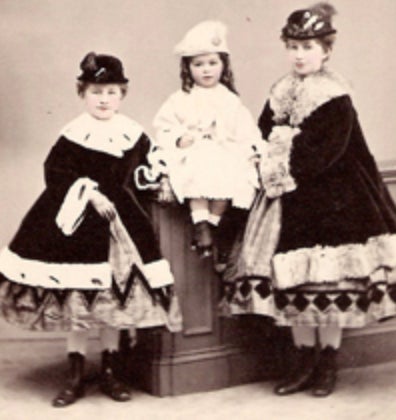
Both of their parents died when all three girls were in their 20’s. They were devastated by both deaths but they were determined to carry on the legacy of their parents.
At the time of Francis’ death, the Drexel’s had amassed a $15 million fortune that today would probably be worth close to $300 million. In his will, Francis had put the money in trust and indicated that the income from the trust was to be equally divided by his daughters and their offspring, not their husbands. His intent was to ward off suitors who might be looking for money. If at the death of the third daughter, there were no surviving offspring, the principal of the trust was to be divided among a group of Philadelphia area charities that he designated.
Katharine’s travels had included trips to the West where she learned the reality of the Native American Indians who had had their land taken away and their culture denigrated. Their treatment by the nation and by the church caused her great concern. Her love and her vast wealth were soon being shared with them. She was convinced that evangelization —sharing of faith-- and quality education were the key to empowerment.
As word of Katharine’s benevolence spread in the U. S., those concerned with the plight of the descendants of African slaves who had been brought to the U.S. and treated as a commodity contacted her for the same type of help. Her philanthropy began to solidify around these two peoples — African Americans and Native Americans.
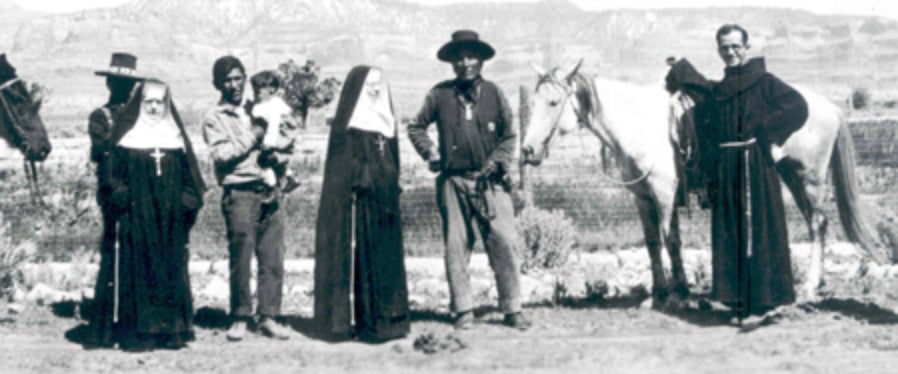
At the same time, Katharine was also dealing with her vocation— to what was God calling her personally? Was it more? For quite a while she felt that her money could be used for her mission and then she could be of service to the people through prayer in a contemplative religious order. She was quite convinced that this was her call. She visited the pope and asked him to send missionaries to carry out the mission she had funded so could become a contemplative and be assured that her missions would continue. His response was “Why not, yourself, be come a missionary?”
Her spiritual advisers supported the Pope’s plan and asked her to discern on a closer union of her mission and vocation—they suggested she found a religious order of women devoted to the particular mission to which she had devoted her financial resources. She struggled with this decision for a long time but finally was convinced that this was God’s will.
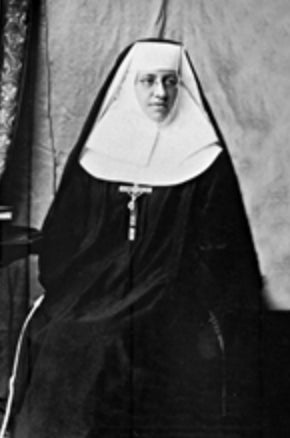
In 1891, Katharine founded the Sisters of the Blessed Sacrament and became Mother Katharine. The new community flourished and she continued to use her amazing wealth to assure that the congregational mission flourished.
She believed in “hands on” leadership and so traveled extensively as her congregation and its works grew. She continued on as leader of the congregation until she was almost 80. After that, Mother Katharine’s weak heart finally allowed her to lead a more contemplative life until her death in her 97th year.
At the time of her death, Katharine was the sole beneficiary of her father’s trust fund. Her older sister Elizabeth had died in childbirth while Katharine was in training to begin her congregation. Katharine and her younger sister, Louise then split the income from the trust fund. Louise—a laywoman, fellow apostle and confidante, died in 1945. She had been married but never had children. When Mother Katharine died, the principal of the trust fund was distributed to a number of charities as per her father’s will—she never contested the will even though it seemed clear that her father would have provided for the Sisters of the Blessed Sacrament had the congregation been founded before his death. Mother Katharine, however, held firm to her idea of stewardship—the money was given by God for a time to be shared with others. When she was gone the Sisters were to rely on God’s divine providence and care for all the congregation’s needs. What a courageous and accurate lesson!
God blessed the congregation and its work. There were more than 500 Sisters by the early 1960’s. For over 100 years, the congregation has been distinguished by its fidelity to its founding purpose, the efficacy of its mission, and its profound spirituality. The greatest joy of the Sisters is the abundant affirmation from the people for whom the congregation was dedicated. Today, like all congregations, the SBS are challenged by the decline in vocations and the increasing costs of care for our elders. We are now under 200 members. Remembrance of Mother Katharine’s small early congregation of 13 members and her emphasis on reliance on God’s providence fill us with peace and hope.
In order to identify Xavier’s founding mission we need to return to the year 1915. That year, Archbishop Blenk of New Orleans approached Mother Katharine about the lack of Catholic higher education for African Americans. With the guidance of the Josephites, Archbishop Blenk was able to offer a plan: Southern University that had been located uptown on Magazine St. in New Orleans had been moved to Baton Rouge in 1912 due to pressure from White neighbors. Their abandoned building which was well suited to higher education was about to be auctioned to the highest bidder.
After prayer, consultation and a personal visit to see the property, Mother Katharine purchased the building and surrounding property through a third party. Old Southern—became St. Francis Xavier, named after a great missionary.
Xavier flourished from the beginning. By 1925 a Teachers College and College of Arts and Sciences had been established and by 1927 a College of Pharmacy had been added. As the college thrived and the high school also expanded, it became clear that additional space was needed. Property on Washington and Pine was purchased in 1929 and the new buildings were dedicated in 1932.
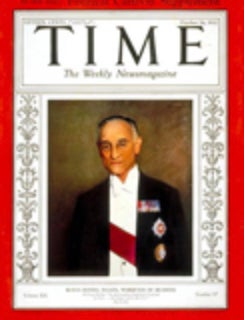
The new buildings at that time stirred as much excitement as the green roofs do today. An article about the new site appeared in Time magazine and newspaper articles covering the event abound. At that time Xavier staff consisted of, 12 SBS, 3 Josephites and 21 lay faculty and staff. Enrollment was around 300.
The high school remained on Magazine St. and continues there today as Xavier Prep with a post-Katrina enrollment of about 400 female students.
A number of elementary schools staffed by SBS in New Orleans created an educational ladder reaching from Kindergarten through college.
It was at Xavier that Mother Katharine could best enable her whole vision and congregational mission—that those who were educated and evangelized by the SBS would become the leaders, educators and evangelizers themselves. The vision has been made a reality in ways that she couldn’t even have imagined.
The impact of University has been told and retold by individuals who were part of the story. It is told everyday here at the University by example as so many graduates have returned to give back and to share. In a unique way, Dr. Francis epitomizes the fulfillment of Mother Katharine’s dream.
Mother Katharine’s death in 1955 had a profound impact on Xavier in many ways, the most obvious being financial. Since she and her two sisters all died without offspring, the trust fund established by her father was divided among charities he had designated.
In order to assure accreditation of Xavier, Mother Katharine had established a relatively small endowment known as the Drexel fund specifically for the University. Her ardent desire and hope had been that the Catholic hierarchy would assume financial responsibility for the University in a manner similar to Catholic University but that has never happened. At her death it was clear that the days of unlimited full scholarships based on need and ability were over. Also, soon after her death, the cultural phenomenon of the 60’s found its way to Xavier.
The anti-war and Black power movements impacted Xavier significantly as did the death of Martin Luther King, Jr. God’s divine providence bestowed strong leadership both at the University and within the SBS congregation.
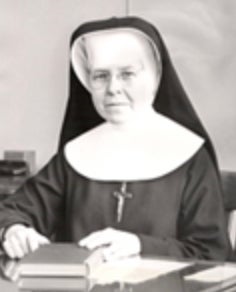
Here I must mention Sr. Mary David Young who was the SBS Mother General from 1964-1970. Her deep understanding of Mother Katharine’s vision and her ability to risk, enabled Xavier to move through those difficult days. She led Xavier in the reformulation of its governance structure, identification of new leadership, rededication to its mission and to new and enriching insights into race and culture.
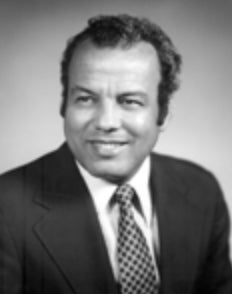
The purpose or mission of Xavier did not change when Dr. Francis became President, but the standard operating procedures took a long leap. When Sr. David and the Sisters turned over Xavier to lay leadership, they did so wholeheartedly. There was no micromanaging, no “reserved powers.” For both the congregation and Dr. Francis and his associates there was a whole lot of reliance on divine providence. That mode of governance and the selection of Dr. Francis as leader have served Xavier well as evidenced by the phenomenal growth and solid reputation that Xavier enjoys today.
Throughout Xavier’s history, in the planning and implementation of the University initiatives at every level, there has always been collaboration with others in order to maximize potential. From the beginning, the administration, staff and faculty were black, white, religious and lay, from the United States, from outside the United States, Catholic and non-Catholic.
It seems clear that this desire for consultation and collaboration did not result from insecurity but rather from the humility/truth that characterized Katharine all of her life.
At the dedication of the new buildings at Xavier in 1932, Katharine watched from a window while those who were actually directly involved took center stage. In the vernacular of today, we would call Mother Katharine “gutsy” and would be echoing “You go girl!”. At a time when women did not have an active voice in society she was not only courageous but also fearless in working for justice. She raised the consciousness of the church and nation. Hers was never a strident voice but she was assertive, respectful and compelling in her arguments. She called her church and her nation to be true to the gospel and to the Bill of Rights. Hers was a voice that could not be stilled.
Mother Katharine was clear about the purpose of Xavier University. She wanted to invite people to fully share in the faith that had shaped her life and she wanted to produce leaders—for society, for government, for the church. From the beginning, there was a great deal of emphasis on liberal and practical education as well as a requirement of service, especially with the students at other SBS schools. There was a strong emphasis on “giving back” with the sense of stewardship or sharing—freely have you received, freely give.
Clearly, the purpose of Xavier has been very consistent over its history. The current Mission Statement of Xavier in many ways quite identical to the founding Mission:
Xavier University of Louisiana, founded by Saint Katharine Drexel and the Sisters of the Blessed Sacrament, is Catholic and historically Black. The ultimate purpose of the University is to contribute to the promotion of a more just and humane society by preparing its students to assume roles of leadership and service in a global society. This preparation takes place in a diverse learning and teaching environment that incorporates all relevant educational means, including research and community service.
Today, more than ever before, we all need to be conscious of fidelity to Xavier’s founding gift. We need to tell the story, reflect on the truth and discover where our lives intersect with the mission of Xavier."